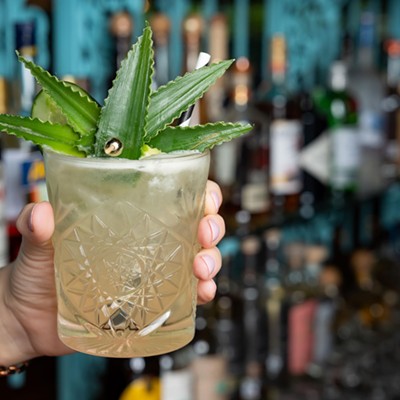Chardonnay has been on our minds.
Last week, our colleague Christine Ha posted on Chardonnay as a the cooking Ingredient of the Week. And, also last week, I posted this review of a California Chardonnay tasted in flight.
Some may find it hard to believe that previous generations hardly knew that the word Chardonnay denoted one of the country's most important white grape varieties, most famously grown and raised in the Côte de Beaune in Burgundy.
Even though my parents didn't drink wine, they couldn't avoid the ubiquitous [California] Chardonnay of the era. It was named after the French village Chablis (Burgundy), where some of the world's most celebrated minerality- and acidity-driven expressions of Chardonnay are bottled. But the wines themselves were made of California-grown fruit, mostly Pinot Blanc, with a mishmash of other white grape varieties added to the mix.
Remember the Orson Welles television ads in the 1970s? "We will sell no wine before its time." Even though the wine had nothing to do with the village or appellation "Chablis," the wines were marketed and sold to Americans with the same ethical pretense as Gallo's "Red Burgundy."
But then in the 1980s, the paradigm shifted radically.
According to the Oxford Companion to Wine (edited by Master of Wine Jancis Robinson), in 1980 "California had just 18,000 acres/7,200 ha of Chardonnay." But "by 1988 the state's total plantings would overtake France's (rapidly increasing) total and that by 2005 California's Chardonnay area [reached nearly] 100,000 acres/40,000 ha of Chardonnay. The rate of new plantings reached a peak in the mid 1990s."
By the mid-2000s, "Chardonnay" had become "North American for 'white wine'" thanks to California's aggressively marketed and "generally rich, heady style of Chardonnay."
A few weeks ago, when the steward aboard a California-bound Southwest flight told me that "Chardonnay" was my white wine option, it's more likely than not that she was unaware of the fact that Chardonnay is a grape variety, let alone that it is most famously grown in Burgundy.
Today -- whether industrially produced Yellowtail Chardonnay from Australia; oaky, buttery Chardonnay from California; or elegant minerality- and acidity-driven Chardonnay from Burgundy -- Chardonnay has become a brand inexorably linked in our minds with "white wine" through the manufactured consent of the wine industrial complex.
One of the things that most people don't realize about Chardonnay (the grape variety) is that it is perhaps the world's most malleable grape. And while high yields (like those employed for critter Chardonnay, i.e., wines with cuddly animals on the labels) deliver imbalanced wines that need to be "corrected" using modern technology in the cellar, Chardonnay is relatively easy to cultivate in a wide range of climates.
Informed wine connoisseurs will tell you that Chardonnay is also one of the world's most "neutral" grape varieties. While the aromatic character of a grape like Sauvignon Blanc will nearly always dominate its tasting profile, Chardonnay's unique versatility will render an expression of site or place (terroir) when it's vinified properly and handled without excessive manipulation.
In Burgundy, a Chardonnay grown in a given vineyard can have a different flavor profile than Chardonnay grown in a vineyard a stone's throw away. Each one of the Côte de Beaune's villages (like Mersault above) will express itself with different characteristics through the Chardonnay that's grown there. You can grow Chardonnay nearly anywhere, but when you grow it in the right climate (cool) and in the right subsoils (predominantly limestone in Burgundy), it can deliver some of the finest white wine known to humankind. This is the reason why the white wines of Burgundy's Côte de Beaune are so coveted and collected.
So, the next time you decide to use Chardonnay as an ingredient, please take a moment to think about where it comes from, who produced it, and how it's been marketed to you. And if you need some Chardonnay to add some acidity and residual sugar to your risotto, please don't use the Mersault!
Follow Eating Our Words on Facebook and on Twitter @EatingOurWords






